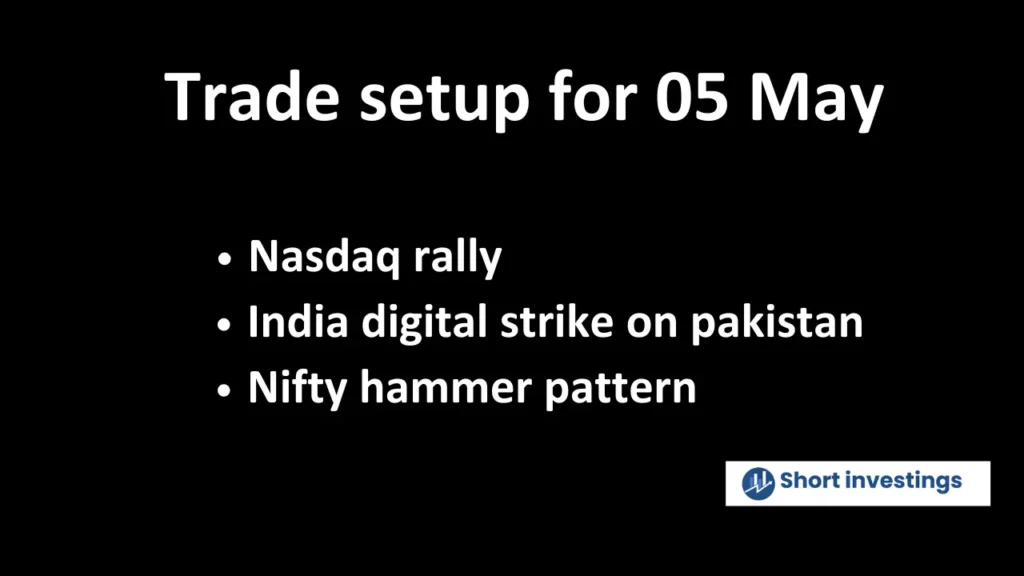
As we analysed in the Friday trade setup, it would be difficult for Nifty to cross the 24,359 level, which was the recent high. The market had already attempted twice to break that level, and made another attempt during Friday’s session. However, by the end, it faced sharp selling pressure from the highs.
After opening on a neutral note, the market attempted to move higher and reached near the 24,600 level. However, it faced sharp selling pressure from the bears and closed near 24,313, once again establishing the 24,350 level as a strong resistance. This level has now become a significant hurdle for the market to close above.”
Global market analysis
Nasdaq rally
The U.S. markets are on the rise, with the Nasdaq continuing its upward momentum, marking around eight consecutive days of gains and closing above the 20,000 level. This rally has been supported by strong earnings reports from major companies.
Recently, Amazon posted results that significantly exceeded estimates. Additionally, their forward-looking investment in local manufacturing is further boosting investor confidence, contributing to Nasdaq’s continued strength.
Canada and Australia election
Canada and Australia recently held national elections for the post of Prime Minister, both conducted securely. In Canada, results have been announced, and the party led by former Prime Minister mark carney has returned to power while jag meet Singh led party NDP losses the seat from 25 to 7 and national party status.
In the case of Australia, reports suggest that Anthony Albanese’s party is likely to win, although it hasn’t been officially confirmed yet. Sources indicate a strong lead for his party. This is viewed positively for India, as the expected leadership is believed to support stronger bilateral ties and cooperation in the future.
Both have the muted response for upcoming trade setup as per reports
Secondary tariffs on the Iranian oil buyer
Trump announced on Truth platform that any country purchasing Iranian oil would face U.S. administration-imposed tariffs. This move came amid growing tensions over the nuclear deal between Iran and the U.S., which was not progressing favourably.
It appears to be a strategic tactic frequently used by the U.S. administration—applying pressure through economic measures when a country does not align with its terms, thereby forcing negotiations toward a deal more favourable to the U.S.
The U.S. has employed similar tactics by imposing secondary tariffs on countries purchasing Venezuelan oil. These repeated actions by the U.S. aim to exert economic pressure, but they are not expected to significantly impact the overall trade setup in the near future. The effect remains largely neutral.
Domestic market analysis
India’s digital and trade strike on Pakistan
India has taken a series of strong countermeasures against Pakistan. Reports indicate that India has banned the social media accounts of major Pakistani celebrities across platforms like Instagram, Twitter (X), and others. Additionally, India has closed its airspace to all Pakistani airlines and imposed a complete ban on imports and exports involving Pakistan.
Efforts by Pakistan to conduct trade with India through third countries have also been blocked. Furthermore, India has raised concerns with the International Monetary Fund (IMF), urging them to reconsider any loan approvals to Pakistan. These steps reflect a firm stance by India in response to ongoing geopolitical tensions.
INR strengthens against the USD
The rupee is showing strong strength against the USD, having made a sharp decline from its previous level, now nearing the 84.50 mark. It has dropped nearly 4% from its recent high, signalling a boost in the rupee’s strength.
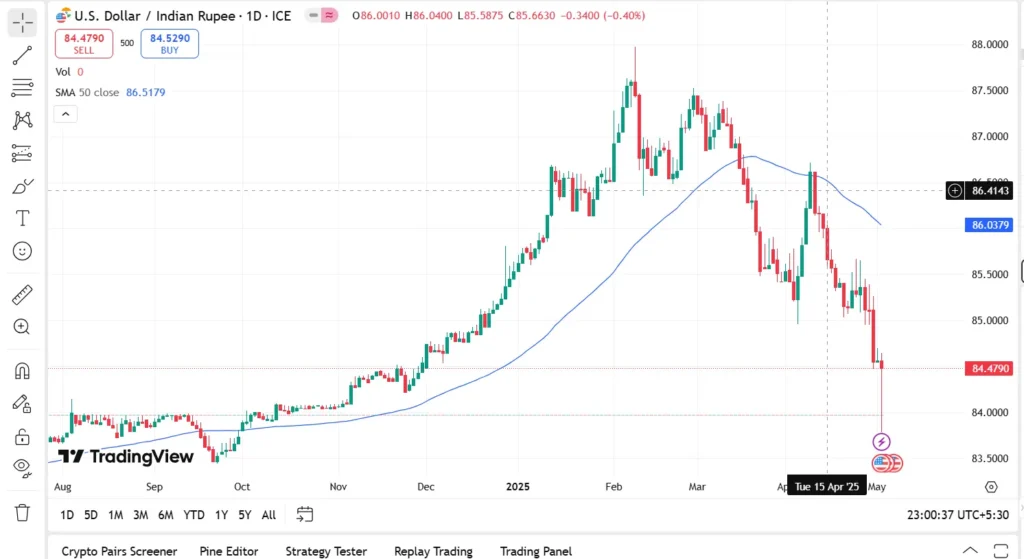
This trend is also happening because Foreign Institutional Investors (FIIs) have gained confidence in the Indian equity market, becoming net buyers over the past two months. Additionally, the ongoing decline of the dollar index at the global level is contributing to a negative response, which is further aiding the rupee’s strengthening.
FII, DII activity
FII (Foreign Institutional Investors) have turned net buyers over the past two months, with a relatively subdued volume of buying. However, both months ended with positive buying, amounting to nearly ₹2,000 crore in total. In April, their purchases increased to approximately ₹2,735.5 crore. This trend is contributing to a sense of muted confidence in the Indian equity market.
In contrast to the significant sell-offs seen in the previous months—February, January, December, November, and October—where FIIs sold massive amounts of around ₹60,000 crore, ₹90,000 crore, and ₹45,000 crore, the buying in March and April has been comparatively smaller in absolute numbers. However, these purchases mark the beginning of a potential shift towards buying. In 02 MAY, FIIs bought approximately ₹2,769.81 crore, while DIIs were net buyers of ₹3,290 crore. This activity is providing a boost to Indian equities and creates hope for further gains in the upcoming trade setups.

Nifty 50 trade setup for tomorrow
Nifty 50 is in a strong formation, indicating potential for further upward movement. There is no significant trend suggesting a downward pressure on the market. While the market may experience occasional pullbacks, it is unlikely to see a significant downside in the near future, as it continues to show strength and resilience.
Tomorrow’s trade setup for Nifty is crucial, as we’re seeing a hammer pattern on the daily timeframe, which typically indicates a potential reversal or a strong support level. This pattern shows a significant spike, suggesting that the market could face resistance at higher levels.
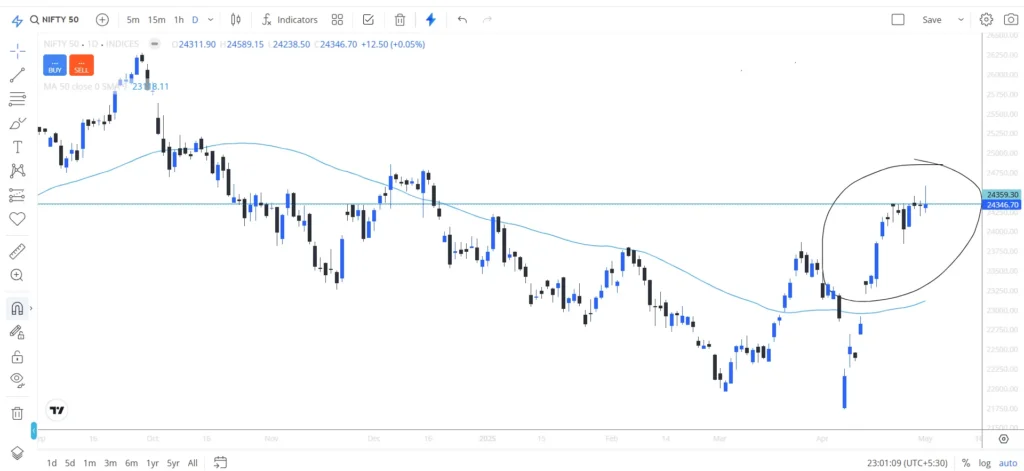
However, when we consider the data, both DIIs and FIIs have been net buyers, which adds a strong bullish sentiment to the market. While the technical analysis suggests possible resistance at higher levels, the buying activity from FIIs points to further strength and upward potential. Therefore, the upcoming trade setup will be interesting and worth closely monitoring.
conclusion
Market is currently at higher levels and showing some resistance from a technical standpoint. However, the positive data suggests a bullish sentiment, creating a mix of muted optimism. The hammer pattern observed on the Nifty chart has appeared before, and for it to be effective, it requires strong support from market trades.
While there aren’t significant negative factors globally, the overall outlook leans towards a higher probability of the market maintaining its upward trajectory, albeit with some resistance. Therefore, the upcoming setup suggests a potential for moderate gains, though not without challenges.


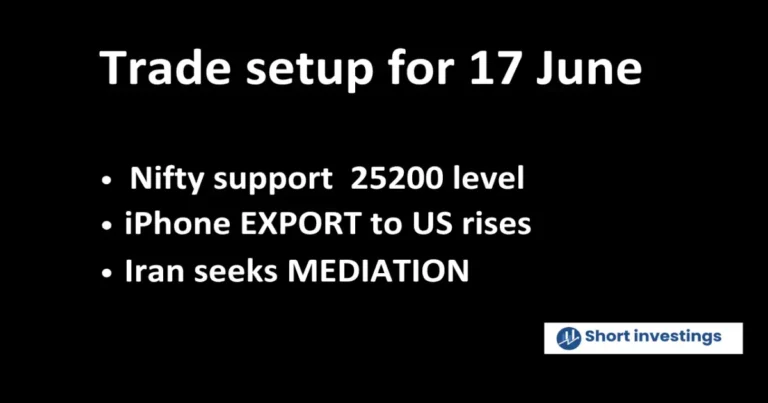
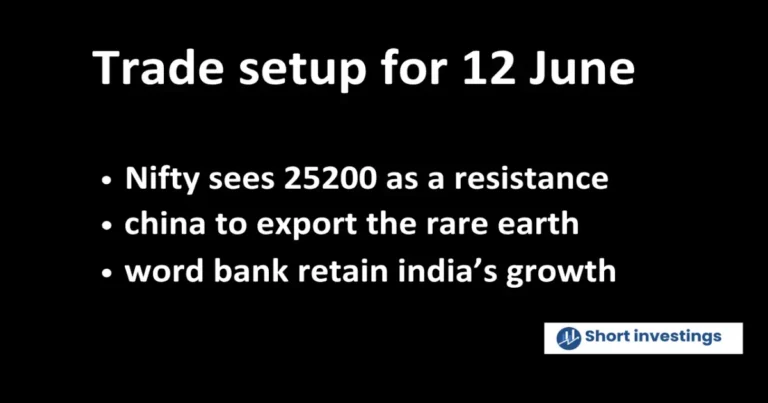
1 thought on “Trade setup for 05 May; Nasdaq rally, INR strength against USD and Nifty hammer pattern”